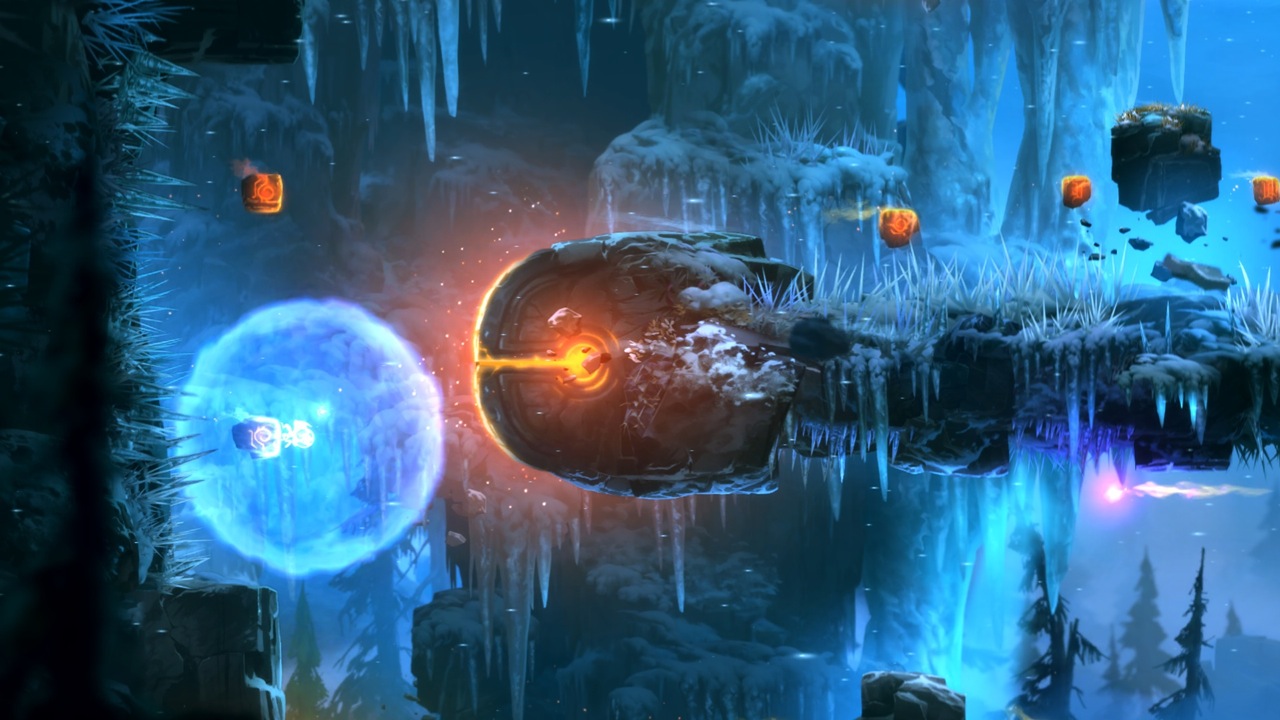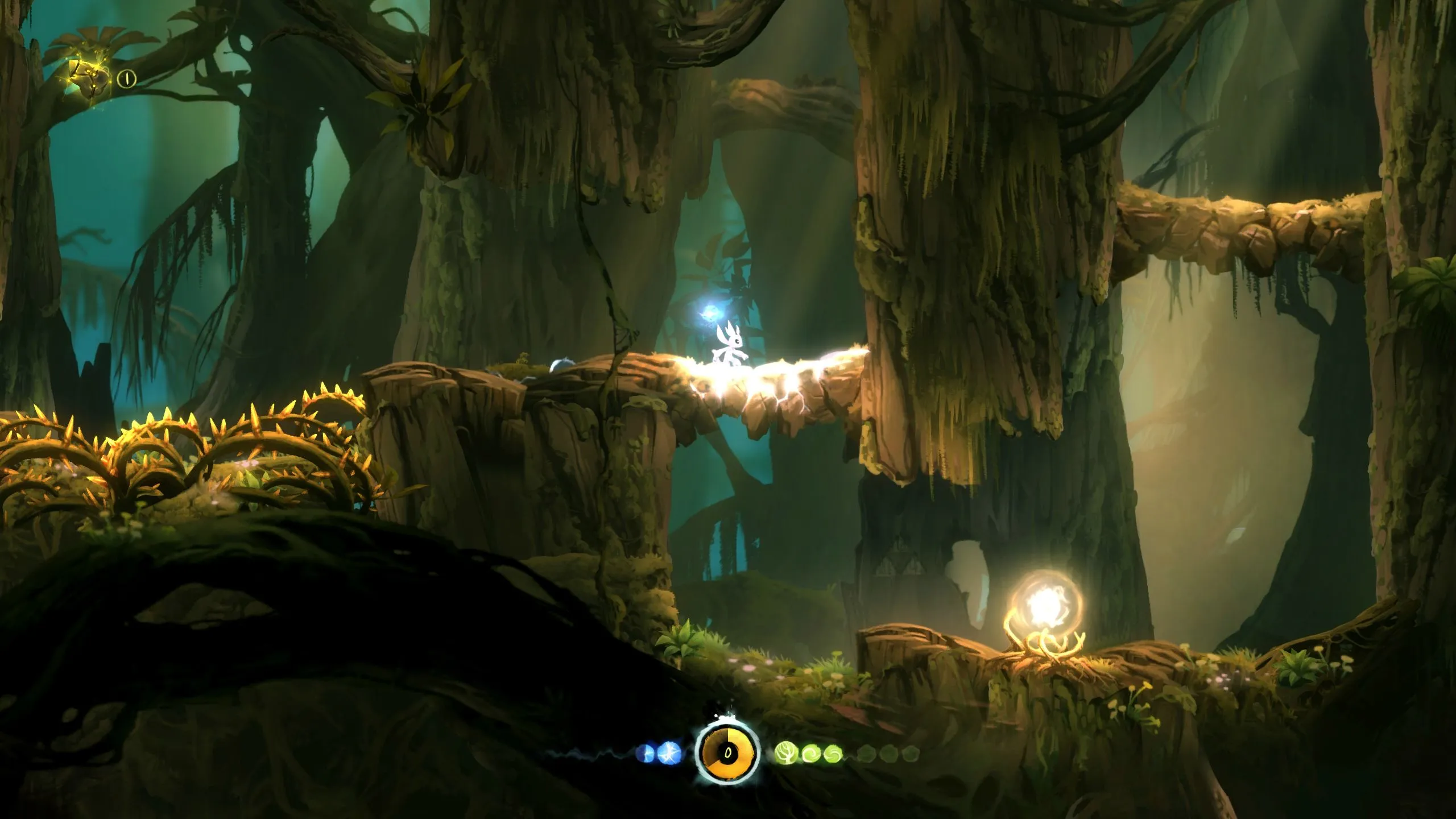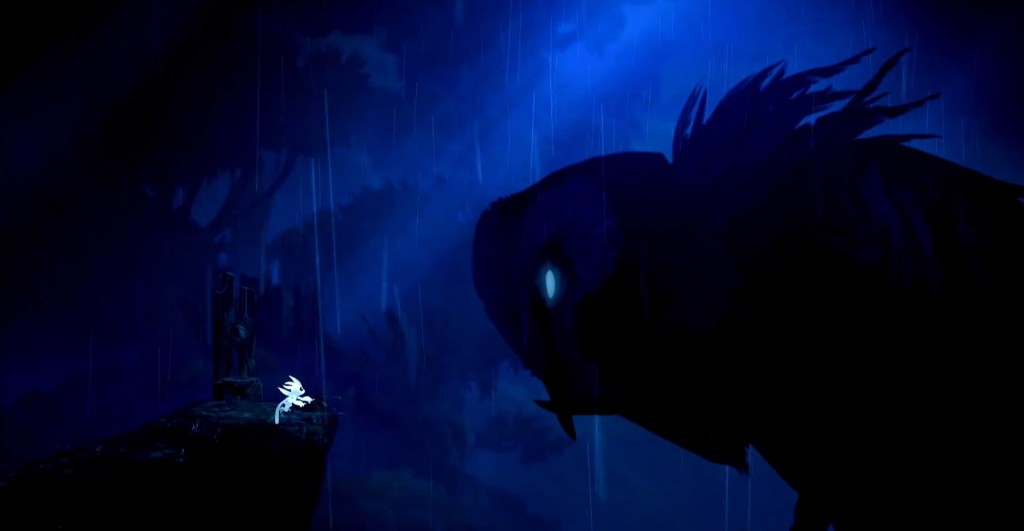Review: Ori and the Blind Forest
Written by Ben Vollmer
Ori and the Blind Forest is beautiful. It’s pretty rare that a game is so jaw-droppingly gorgeous that it’s the appearance, rather than the mechanics that lay beneath, that takes precedence. Ori is just that wonderful to look at. That says a lot, given the near perfection that lines the interior of what the game has to offer.
The game makes a dedicated attempt to revitalize the niche “Metroidvania” genre that has escaped the public’s eye for too long. A lot of the game’s mechanics draw directly from classics like Super Metroid, even if they are a bit simplified. Take, for instance, the game’s combat.
Ori and the Blind Forest doesn’t make much of an effort to complicate its combat. It works off of a one-button-press system that allows players to tap away until your foe’s health has been exhausted. There are various upgrades available to Ori, a small “guardian spirit”, but most of the combat related ones (which occupy one of three skill branches) simply strengthen your power. It’s the first design choice that really sticks out: the game never intends for you to agonize over its combat. Instead, it makes it all about the rapid and intricately designed platforming.

Of the aforementioned skill branches, platforming takes up an entire third. It’s well deserved, since every area in the game is designed around different ways of getting to one place. Whether it be via the learned “dash” mechanic that can only be found in an entirely optional area, or a triple jump that is toward the back end of the skill tree, Ori can utilize several different skills to achieve the same thing.
Thankfully, it isn’t just the skills that make Ori’s platforming such a delight, it’s also the incredibly responsive controls. Because the platforming is so quick (you can get from one end of the map, vertically or horizontally, in a matter of seconds), responsive controls are an absolute must. The game’s well-established difficulty is rooted in the speed of the game, whether it be the aggressiveness in which enemies attack or the various traps that stand in your way. Fortunately, having played on an Xbox One S controller, Ori’s movements react without any input delay. Moreover, the various pressures you tap the jump button with are perfectly sensitive.
It’s also one of the few 2D games that really benefits from a set of analog sticks rather than a more commonly used directional pad. The various angles Ori and the Blind Forest asks you to direct Ori through require extremely precise jumps. While using the d-pad is possible, the analog sticks allow you to make a more accurate leap.

The game thrives in its exploration. Specifically because the game can be so brutally difficult if you don’t hunt for upgrades, it’s strikes a perfect balance between freedom of choice and achievement. By the end of the game, you’ll likely have less than a third of the available upgrades unless you go out of your way to get more. As the map opens up, and your skill tree is enhanced, items become more easily attainable. Many areas that were not available early on in the game become unlocked as you grab new abilities. It’s satisfactory, and even without the fast travel system, Ori is so blindingly quick that getting from one end of the map to the other can be done quickly. Backtracking has never felt so convenient.
If there’s a complaint to be had, outside of the rudimentary combat system, it’s that Ori never makes a firm attempt to separate itself from the genre. There aren’t a whole lot of mechanics that it introduces, and the ones that it does are either forgettable or too small to mention. Ori and the Blind Forest isn’t mechanically innovative, but that’s okay given that it introduces an art style that hasn’t been matched.
When you first look at Ori and the Blind Forest, you see a lively pallet of blue, orange, green and neon. It really is a site to behold, and the animation that it’s paired with is top notch. The game does an excellent job of distinguishing between different areas, whether it be a pitch black forest with only blue neon light to guide the way or a slimy brown forest with trashy greens and sulky reds. There are certain moments in the game, with one avalanche inducing wall climb comes to mind, that really set a unique precedent for what 2-dimensional games have been able to do in the past. There are often so many little things going on at once, that it would be impossible to focus your attention on any one thing.
Ori, the glowing white spirit that the player controls for most of the game, is dwarfed by many of the game’s scaled areas – whether it be a lava-ridden mountain or the elegant Kuro, a large and intimidating owl that hunts you for a majority of the game’s plot. Despite Ori’s size, you never feel out of place. The game makes sure that you understand that Ori’s world, the one we transverse, is Ori’s by right. What we see is Ori’s universe being stripped away in front of the guardian’s eyes.

It would be unfair to go without mentioning the game’s subtlety brilliant narrative, one that is no doubt an allegory for our own earth. Ori, a creature that has inherited this world as its own, has to witness the slow and brutal decay as time passes. *SPOILERS AHEAD* As Kuro, the game’s enemy, tries to thwart Ori’s attempts at releasing the light back into the “Blind Forest” we slowly uncover her intentions. It isn’t one of malice, as the game so expertly makes us expect, but one of fear. Kuro’s unborn children, still eggs yet to hatch, seem resilient to the light. It’s an off-the-nose allegory for human nature – which Moon Studios so gracefully paints in the most optimistic of lights – which seems to overly possessive of a world that wasn’t their’s to begin with. In the end, Kuro isn’t the demon that we make her out to be. She’s just scared the change for the better may not be better for, and in turn, her children. *SPOILERS OVER*
Ori and the Blind Forest falls just short of a masterpiece. It’s lack of innovation and simplified combat are the sole marks on an otherwise perfect experience. Having been followed up by several other 2D Metroidvania games already, it’s safe to say that Ori helped revitalize a genre that desperately needed a shot in the arm.
Score: 8.5
Rank: #21
